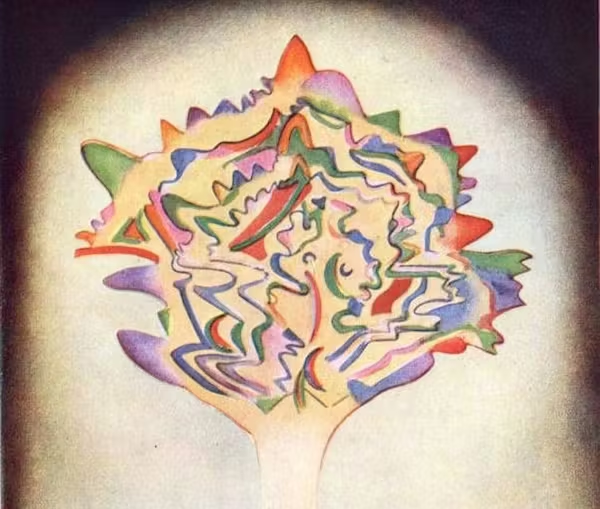
best of occult

Robert Fludd and His Images of The Divine
Between 1617 and 1621 the English physician and polymath Robert Fludd published his masterpiece Utriusque Cosmi . . . Historia, a two-volume work packed with over sixty intricate engravings. Urszula Szulakowska looks at the philosophical and theological ideas behind the extraordinary images found in the first volume, an exploration of the macrocosm of the universe and spiritual realm. more

In the spring of 1920, at the beginning of a growing fascination with spiritualism brought on by the death of his son and brother in WWI, Arthur Conan Doyle took up the case of the Cottingley Fairies. Mary Losure explores how the creator of Sherlock Holmes became convinced that the 'fairy photographs' taken by two girls from Yorkshire were real. more

Victorian Occultism and the Art of Synesthesia
Grounded in the theory that ideas, emotions, and even events, can manifest as visible auras, Annie Besant and Charles Leadbeater’s Thought-Forms (1901) is an odd and intriguing work. Benjamin Breen explores these “synesthetic” abstractions and asks to what extent they, and the Victorian mysticism of which they were born, influenced the Modernist movement that flourished in the following decades. more

Darkness Over All: John Robison and the Birth of the Illuminati Conspiracy
Conspiracy theories of a secretive power elite seeking global domination have long held a place in the modern imagination. Mike Jay explores the idea’s beginnings in the writings of John Robison, a Scottish scientist who maintained that the French revolution was the work of a covert Masonic cell known as the Illuminati. more

Ghostwriter and Ghost: The Strange Case of Pearl Curran & Patience Worth
In early 20th-century St. Louis, Pearl Curran claimed to have conjured a long-dead New England puritan named Patience Worth through a Ouija board. Although mostly unknown today, the resulting books, poems, and plays that Worth "dictated" to Curran earned great praise at the time. Ed Simon investigates the curious and nearly forgotten literary fruits of a “ghost” and her ghostwriter. more

Jon Crabb on the witch craze of early modern Europe, and how the concurrent rise of the mass-produced woodcut helped forge the archetype of the broom-riding crone — complete with cauldron and cats — so familiar today. more

Although Jacques Collin de Plancy’s Dictionnaire infernal, a monumental compendium of all things diabolical, was first published in 1818 to much success, it is the fabulously illustrated final edition of 1863 which secured the book as a landmark in the study and representation of demons. Ed Simon explores the work and how at its heart lies an unlikely but pertinent synthesis of the Enlightenment and the occult. more

The Emancipatory Visions of a Sex Magician: Paschal Beverly Randolph’s Occult Politics
Erotic magic, Black emancipation, gender fluidity, interplanetary spirit realms — these were but a few of the topics that preoccupied Paschal Beverly Randolph (b. 1825), an occult thinker who believed that his multiracial identity afforded him “peculiar mental power and marvelous versatility”. Lara Langer Cohen considers the neglected politics of Randolph’s esoteric writings alongside the repeated frustration of his activism: how dreams of other worlds, above and below our own, reflect the unfulfilled promises of Emancipation. more

Marked by Stars: Agrippa’s Occult Philosophy
Reading Heinrich Cornelius Agrippa’s encyclopedic study of magic is like stumbling into a vast cabinet of curiosities, where toad bones boil water, witches transmit misery through optical darts, and numbers, arranged correctly, can harness the planets’ powers. Anthony Grafton explores the Renaissance polymath’s occult insights into the structure of the universe, discovering a path that leads both upward and downward: up toward complete knowledge of God, and down into every order of being on earth. more

“The Substantiality of Spirit”: Georgiana Houghton’s Pictures from the Other Side
When Georgiana Houghton first exhibited her paintings at a London gallery in 1871, their wild eddies of colour and line were unlike anything the public had seen before — nor would see again until the rise of abstract art decades later. But there was little intentionally abstract about these images: Houghton painted entities she met in the spirit regions. Viewing her works through the prism of friendship, loss, and faith, Jennifer Higgie turns overdue attention on an artist neglected by historians, a visionary who believed that death was not the end, merely a new distance to overcome. more
























